For more than 30 years, research funded by the Wind Energy Technologies Office has addressed wind energy’s effects on wildlife and the environment.
Wind Energy Technologies Office
June 26, 2023In addition to providing electricity, wind energy supports environmental advocacy. However, apprehension about wind energy’s potential impacts on wildlife goes way back. In the early 1990s, environmental advocacy groups raised concerns about wind power’s potential risk to avian species—particularly the federally protected golden eagle—in one of the nation’s first commercial wind energy developments: the Altamont Pass Wind Resource Area near San Francisco, California.
Although very little data existed on avian impacts at the time, the U.S. Department of Energy’s Wind Energy Technologies Office (WETO) recognized this as a priority that needed to be addressed.
Over the next 30 years, WETO invested in efforts to monitor, understand, mitigate, and share information related to interactions between wind power technologies and birds, bats, and other wildlife.
Wind Energy and Wildlife Over the Years
Collaborative Efforts Promote Responsible Deployment
To promote discussion, research, and responsible deployment of wind energy, WETO has supported collaboration with utilities; wind energy developers; and environmental-stewardship, regulatory, siting, and consumer-advocate organizations. The following collaborations have helped develop a better understanding of the interactions between wildlife and wind turbines.
Bats and Wind Energy Cooperative
In response to multiple reports of bat impacts at wind energy facilities in Pennsylvania and West Virginia, the Bats and Wind Energy Cooperative (BWEC) was formed in 2004 to minimize such events. The BWEC has focused on studying bat behavior and fatalities around wind turbines and conducted the first U.S. validation studies on curtailment (adjusting the speed of turbine blades) and deterrence (design elements to reduce interactions between wind turbines and wildlife). Additionally, BWEC brings lead scientists together to address key concerns for wind energy. In 2021, the BWEC produced a report on research priorities for monitoring bat behavior at the wind turbine-scale.
Members of the cooperative meet every few years to discuss the state of the science and establish research priorities to address bat interactions with wind turbines, improve monitoring methods, and validate minimization strategies.
Through the National Renewable Energy Laboratory (NREL), WETO has supported BWEC since its inception. Bat Conservation International served as the coordinator from 2004 through 2019. NREL took over the coordinating role in 2020.
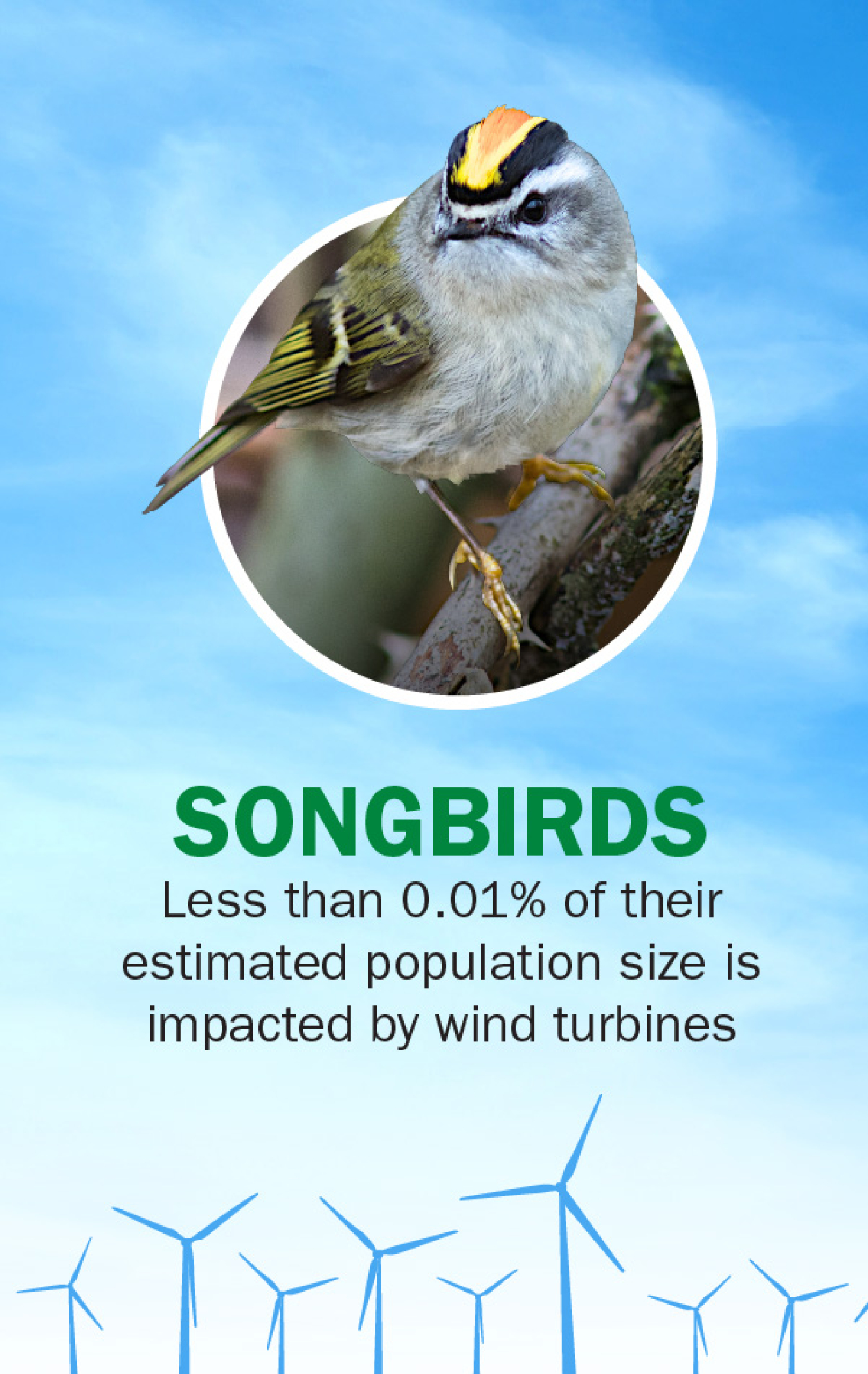
Working Together to Resolve the Environmental Effects of Wind Energy
Established in 2012 by the International Energy Agency Wind (IEA) Technology Collaboration Programme, Working Together to Resolve the Environmental Effects of Wind Energy (WREN) identifies international priorities for research, facilitates wind energy deployment through social support and environmental compatibility, and synthesizes information on complex wind energy and wildlife interactions. The group ensures global access to information on the state of the science through the Tethys Knowledge Base.
In 2022, WREN published an international assessment of land-based and offshore wind priorities for environmental research. WREN also recently released a Wind Energy Monitoring and Mitigation Technologies Tool to highlight research associated with validating technologies that assess and reduce potential wildlife impacts resulting from land-based and offshore wind energy development.
The United States leads the 13 member countries that participate in the IEA WREN task (also known as Task 34). Within the United States, support comes from DOE’s WETO, the Pacific Northwest National Laboratory, and NREL.
National Wind Coordinating Collaborative
The National Wind Coordinating Collaborative (NWCC) was formed in 1994 to address wind-wildlife impacts and allow for the responsible expansion of wind energy in the United States.
The NWCC focused on information exchange and conducted webinars, developed research briefs, and hosted a bi-annual conference.
In 2020, an analysis of research found that wind energy’s impacts on prairie grouse is small, and similar to the impacts of other human-made infrastructure. Additional work supported by WETO may help to mitigate these affects in the future.
The NWCC was retired in 2020 but the Renewable Energy Wildlife Institute continues many of the activities.
Renewable Energy Wildlife Institute
The Renewable Energy Wildlife Institute (then the American Wind Wildlife Institute) was formed in 2008 to help achieve wind energy’s full conservation potential through science and collaboration.
In 2019, the Renewable Energy Wildlife summarized the impacts to wildlife of wind energy siting and operation in the United States and, in 2020, estimated that wind turbines correspond to less than 0.01% of all estimated bird mortality from human activity per year. Although the impact of wind turbines varies by species, the cumulative collision mortality of songbirds is estimated to affect less than 0.01% of their population, the highest of any type of bird.
Our collaborations help ensure that related research is conducted in an open and unbiased manner and documented with publicly available research findings and peer-reviewed publications.
WETO’s approach for supporting collaborative activities has convened electric, conservation, and regulatory stakeholders in discussions and activities that have helped transform wind power to a significant energy sector contributor with minimal impacts on wildlife.
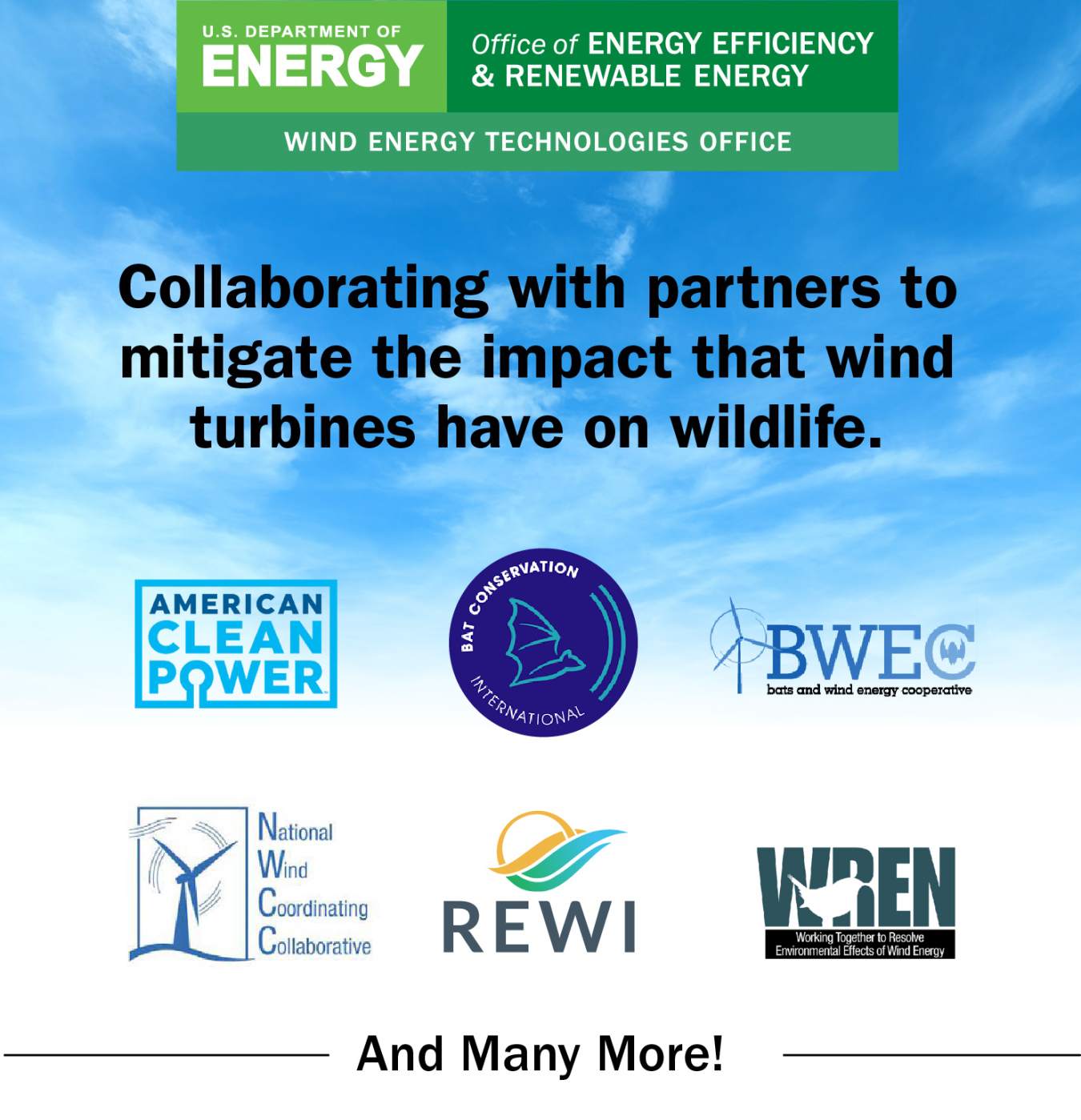
Research Leads to Mitigation Strategies
In addition to collaborative efforts, WETO funds ongoing research into the effects of wind energy development on specific wildlife species. WETO’s goal is to advance technological solutions that reduce adverse impacts of wind turbines on wildlife while also lowering or eliminating any economic losses introduced by impact minimization measures.
With increased knowledge about the risk of impacts from wind power on wildlife, researchers are turning toward developing and implementing strategies to minimize or mitigate impacts. To better understand wildlife’s interactions with wind turbines and minimize them, researchers:
- Measure species populations and how they are impacted by wind turbines.
- Observe their behavior near wind turbines (such as with thermal cameras for bats).
- Perform preconstruction monitoring to assess wildlife activity levels at proposed wind turbine sites.
- Conduct post-construction surveys to determine impacts, compare data between facilities, and determine patterns that could be caused by weather and habitat.
- Validate the effectiveness of curtailment measures (including reducing the rotational speed of wind turbines under low wind speeds when bats are at risk) and deterrents (devices designed to discourage bats from approaching turbines).
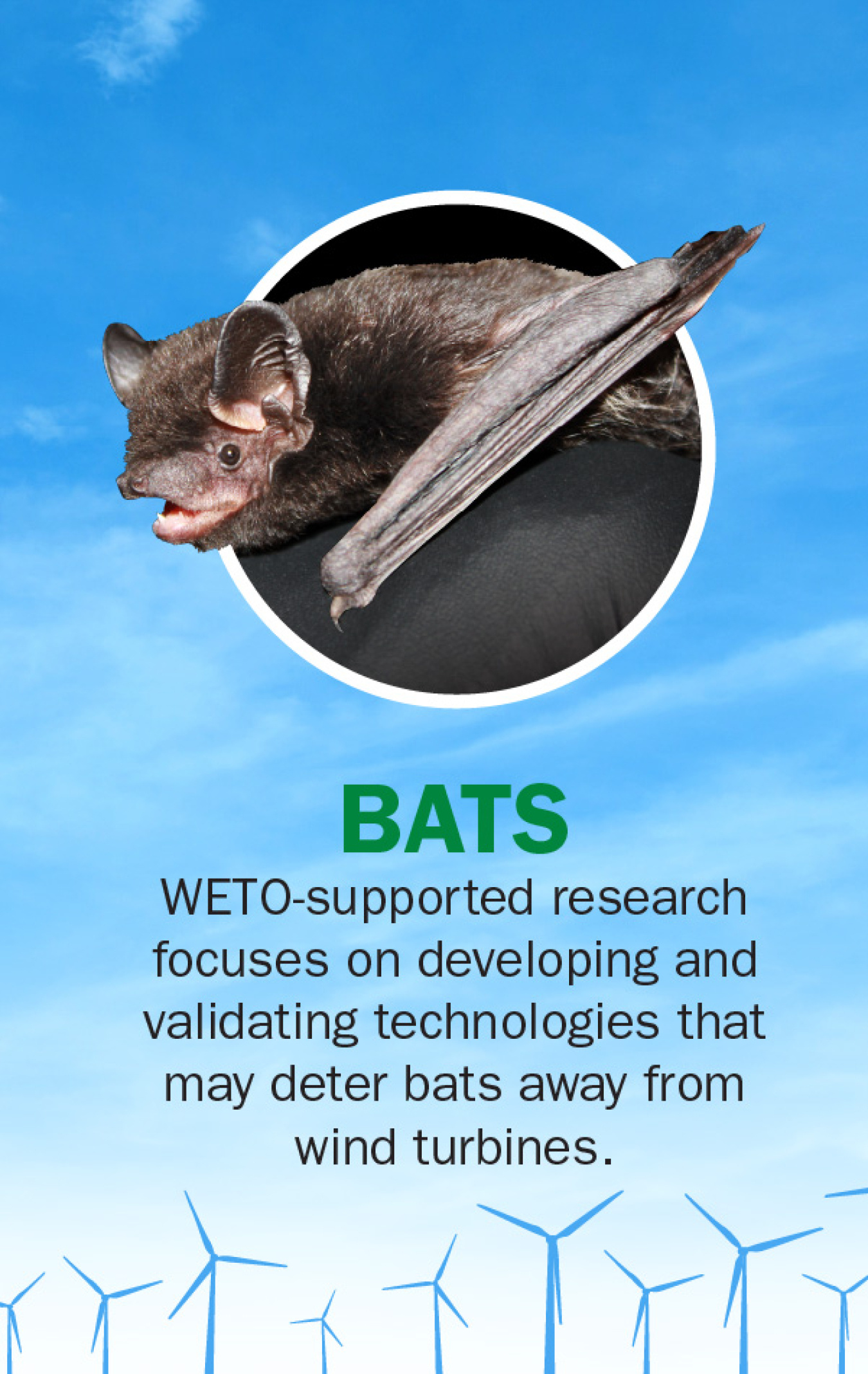
Curtailment Can Lower Risks to Bats by 50%
A notable result from WETO-funded research has been advancements in curtailment strategies to minimize impacts to bats. A 2013 BWEC synthesis report and a 2021 Bat Conservation International summary of bat-related curtailment research indicated that curtailment can, on average, reduce bat mortality by 50%. In 2015, the American Renewable Power Association (then American Wind Energy Association) developed the first wildlife-related best management practice, which curtails operation at wind speeds below the manufacturer’s cut-in speed (the speed wind turbines begin generating electricity). This approach may reduce bat impacts by as much as 30% with minimal loss in energy production. Many industry companies have adopted this best-practice guideline.
More recently, to counteract the lower energy output and resulting economic effects caused by curtailment, researchers are also developing “smart curtailment” approaches that incorporate other risk factors, such as temperature and real-time or modeled bat activity patterns.
Technology to Deter Bats
While additional research is needed on bat and wind turbine interactions, a chief focus of current projects is developing and validating technologies that may deter bats away from wind turbines. Technologies focus on emitting high-frequency sound (or ultrasound) that jams bats’ echolocation or sonar capabilities. The intent is to reduce bat activity near wind turbines by creating a disorienting airspace.
To explore the effectiveness of ultrasonic deterrents, WETO:
- Funded a 2009 wind turbine test of an ultrasonic bat deterrent in coordination with the Bats and Wind Energy Cooperative that resulted in significant reductions in overall bat fatalities. The project team has since refined the approach through improvements in hardware and procedures.
- Funded multiple research projects in 2015 that supported field validation studies for nacelle-mounted deterrent technologies for GE and NRG Systems, and blade-mounted ultrasonic deterrents for the University of Massachusetts Amherst, and Iowa State University. NRG Systems’ deterrent has since been commercialized and deployed widely.
If proven effective at reducing fatalities compared to curtailment, these techniques could replace or augment curtailment options—thereby reducing losses in wind plant energy output.
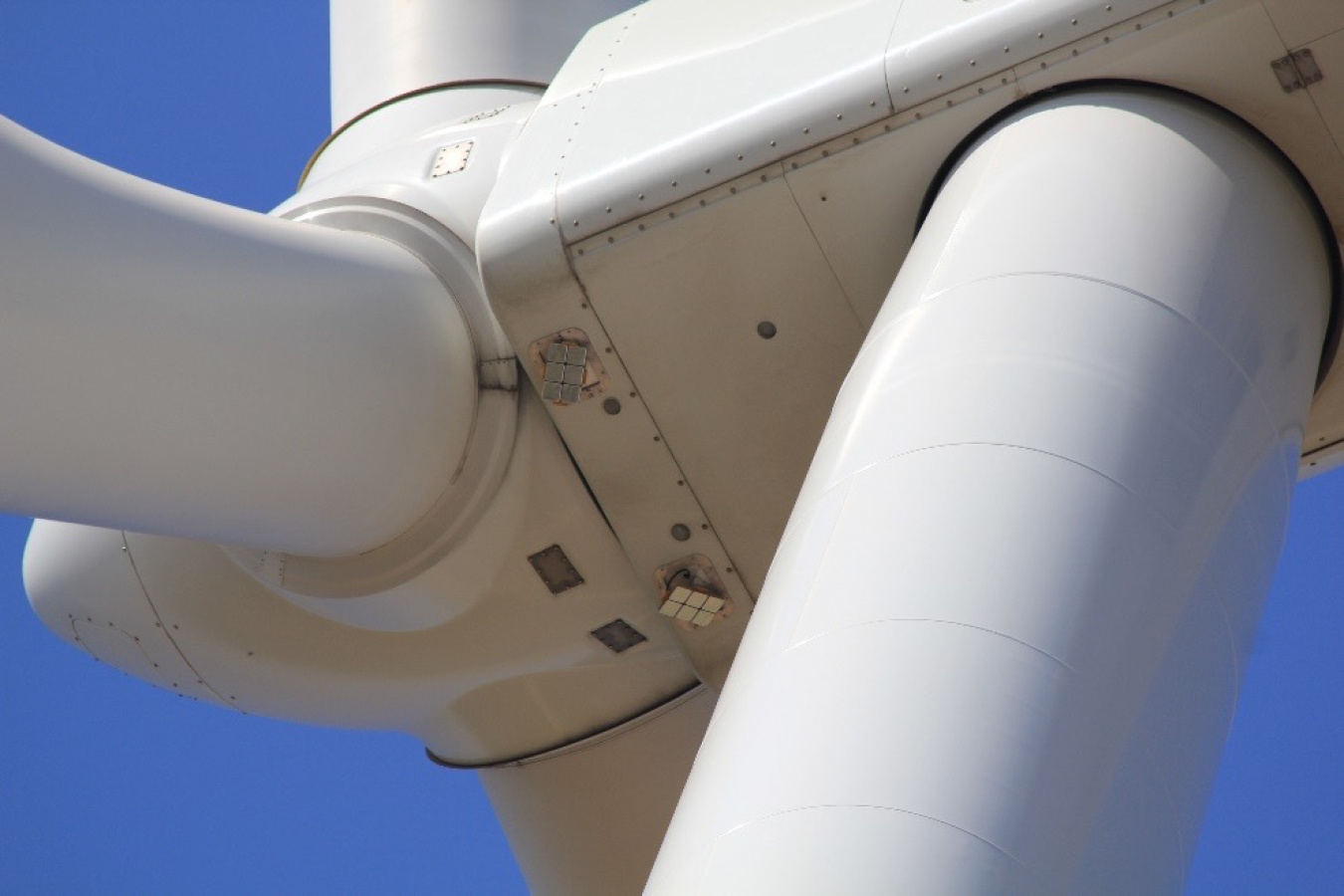
Nacelle-mounted deterrent systems like those pictured here have been shown to reduce overall bat fatalities by 50% and more.
Models Can Help Wind Energy Developers Avoid Crossing Eagles’ Paths
When golden eagles and other raptors spread their wings and take to the skies, they conserve energy by soaring on updrafts (upward movements of air) that enable them to sustain flight longer. However, the locations and conditions that enable this kind of flight are also favorable for wind energy generation, increasing the potential of collisions between wind turbines. Because raptors have low population growth and are protected by federal law, any impact from wind turbines could affect their population sizes.
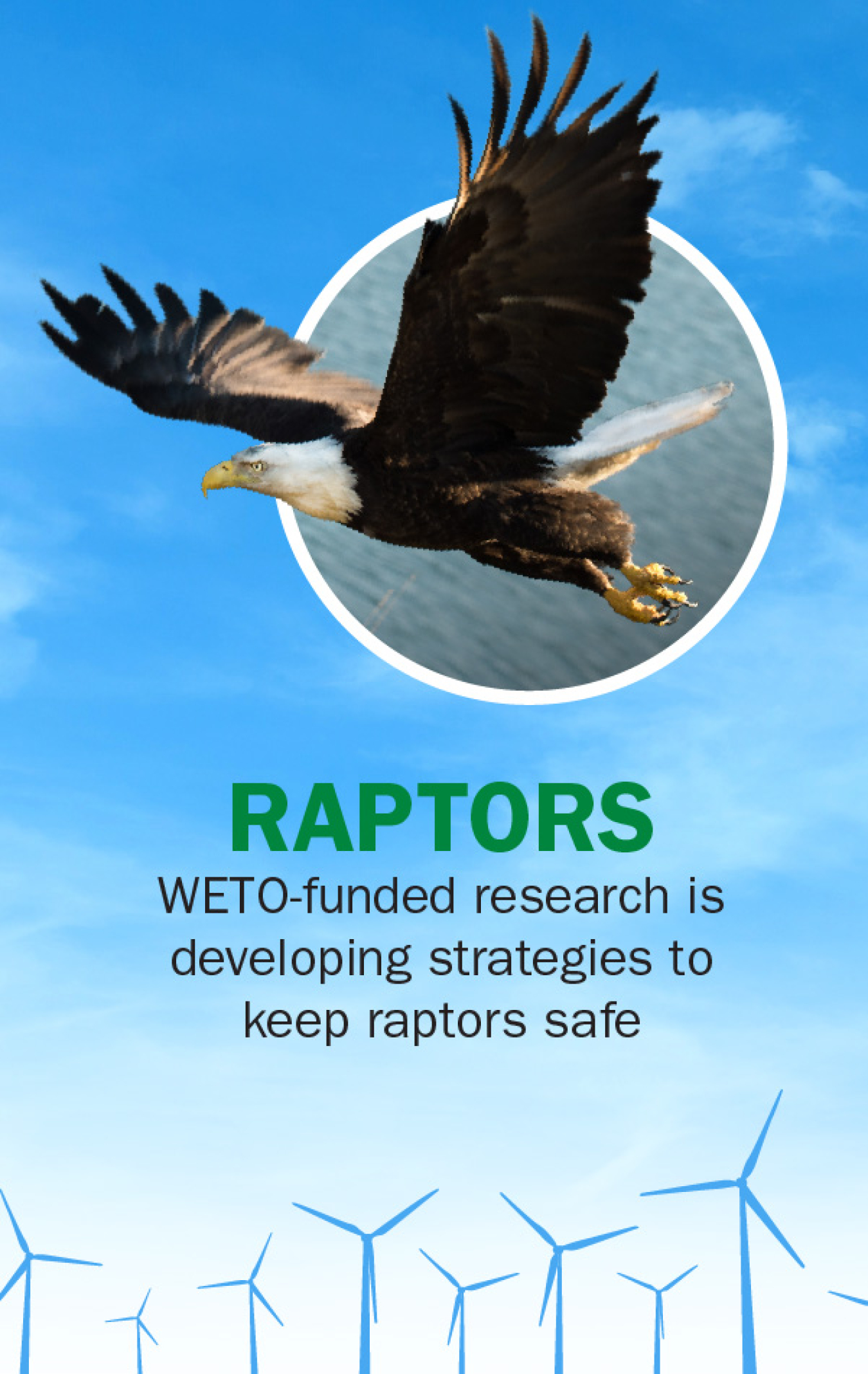
Researchers are developing strategies that minimize raptor interactions with wind turbines by:
- Monitoring and tracking eagle movements around wind farms using human observers or advanced artificial-intelligence-enabled camera systems that can detect, identify, track, and issue orders to cease turbine operation or trigger an eagle deterrent signal.
- Conducting raptor physiology and behavioral studies to understand how birds use their vision and hearing perceive their environment and wind turbines.
- Producing models that predict flight paths and risks around wind power plants, which can be used to plan plant locations or adjust turbine operations throughout the day and year.
Research Continues
Since the 1990s, WETO has facilitated and supported activities designed to encourage wind energy market acceptance and expansion, which have contributed substantially to establishing wind in the energy arena.
Important progress has been made in developing solutions, including curtailment and deterrents, to minimize impacts of wind energy development on wildlife, which the wind energy industry and conservation stakeholders are actively involved in developing, adopting, and supporting.
As wind energy expands offshore and into lower wind-speed locations, such as the Southeastern United States, the need for research that protects wildlife—including birds, bats, and marine mammals—from wind energy development will continue to grow.

